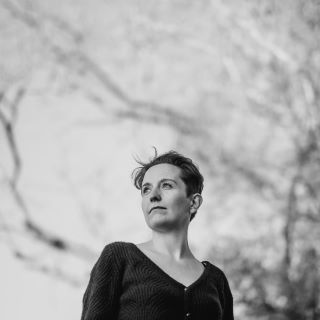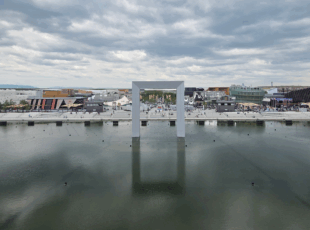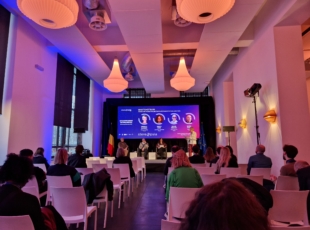What The Hub ?
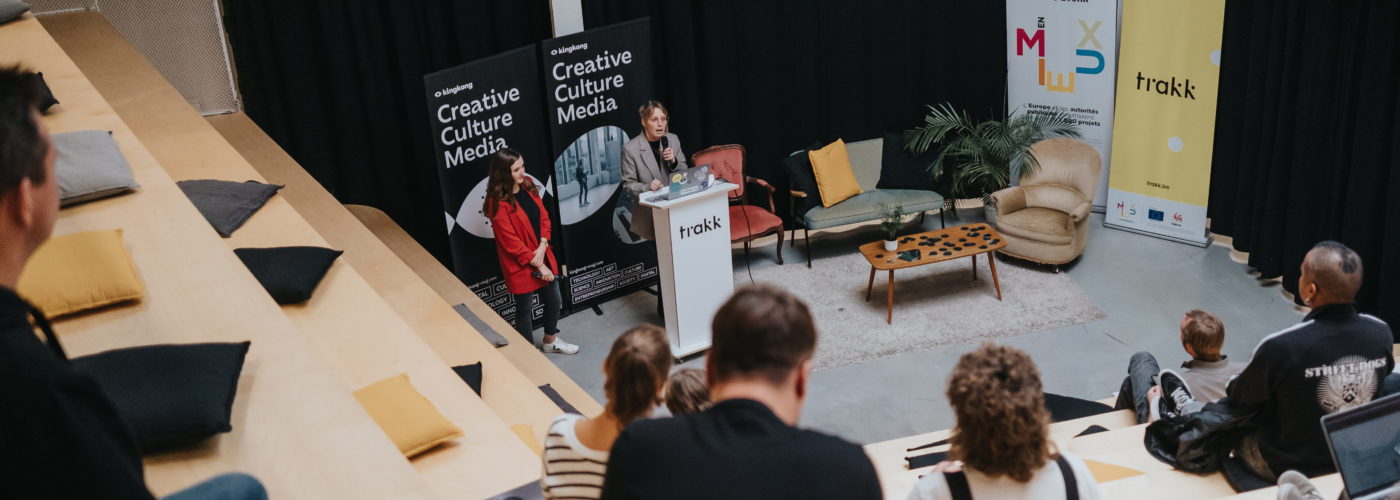
Article author :
Trakk is what we call a creative hub. It’s a central point, a pivotal system where the CCI, the cultural and creative industries, come together. But while the definition isn’t difficult to grasp in theory, in practice there are so many examples that it’s a bit confusing.
So the kingkong team decided to take a look at the form of hubs (architecture, furniture, spaces), but also at the substance of what they offer, in terms of content, values and intentions, to encourage companies and start-ups to pass through the door of these post-industrial places, which sometimes seem a little inaccessible.
When we ask various people around us what a ‘creative hub’ is, the responses are numerous, vague and a little mysterious.
- Hmm … it’s co-working, isn’t it?
- Me, I think it’s something like FabLab
- It makes me think of creative premises with trendy swings…
- A bit like Google office complexes, something like that…
In short, as many responses as the number of people we asked. Consequently, with the kingkong team, it was established that we needed to implement some theoretical popularisation, because even we, from time to time, can lose our bearings amongst all these Frenglish terms gravitating around computer generated innovation, digital technology and entrepreneurship in 2023.
WHAT IS A CREATIVE HUB?
A creative hub, also known as a creative centre or creative space, is a physical or virtual site designed to encourage collaboration, innovation and artistic expression. It involves a space where creative individuals from different domains can meet each other, collaborate on projects and find inspiration.
A creative hub can take different forms, depending on the activity domain and the specific objectives. It can be a shared workspace where creative professionals work together, an innovation laboratory where researchers and entrepreneurs develop new ideas, an arts studio where artists work on their projects, or even an online platform where creatives can connect virtually.
Creative hubs often offer a stimulating environment where people can exchange knowledge, benefit from pooled resources such as equipment and tools, take part in workshops, training sessions or events, and establish professional collaborations. These spaces boost the emergence of new ideas, creativity, experimentation and innovation.
Numerous creative hubs also aim to support and to promote local creative industries, such as the visual arts, music, cinema, design, fashion, video games and many others. They can serve as platforms for the presentation and the commercialisation of creative works, as well as for the development of entrepreneurial skills in the creative sector.
It should be noted, first of all, when we made our request, in French initially, that ChatGPT is still not employing inclusive writing. Too bad. Then, on reading this definition, in it we spot several words which leap out at us: creative space, collaboration, innovation, domains, shared work, laboratory, stimulating, creative industries. Creative hubs must therefore be understood both in terms of their form (the environment, the architecture, the furnishings) and in their content (the philosophy, the missions, the activities).
Zoom-in on the form
We have this slightly fictional image of Google or Facebook office complexes (or even towns) in California (oh, you have also seen Justin Timberlake in the film, The Social Network? No. OK…). Imagine super-open spaces, modern industrial architecture, with plants, swings, small individual spaces, play areas, supersonic coffee machines, etc. And even if this representation is admittedly stereotyped, it is all the same not too far from reality.
So, of course: it involves riding the wave of Instagram-friendly (or Pinterest?) trends. But the architecture, the furnishings, the décor (the form, in other words) are indispensable ingredients to foster creativity and collaboration: –Are you also wondering how transparent whiteboards, a table football game and an arena filled with cushions encourage innovation?
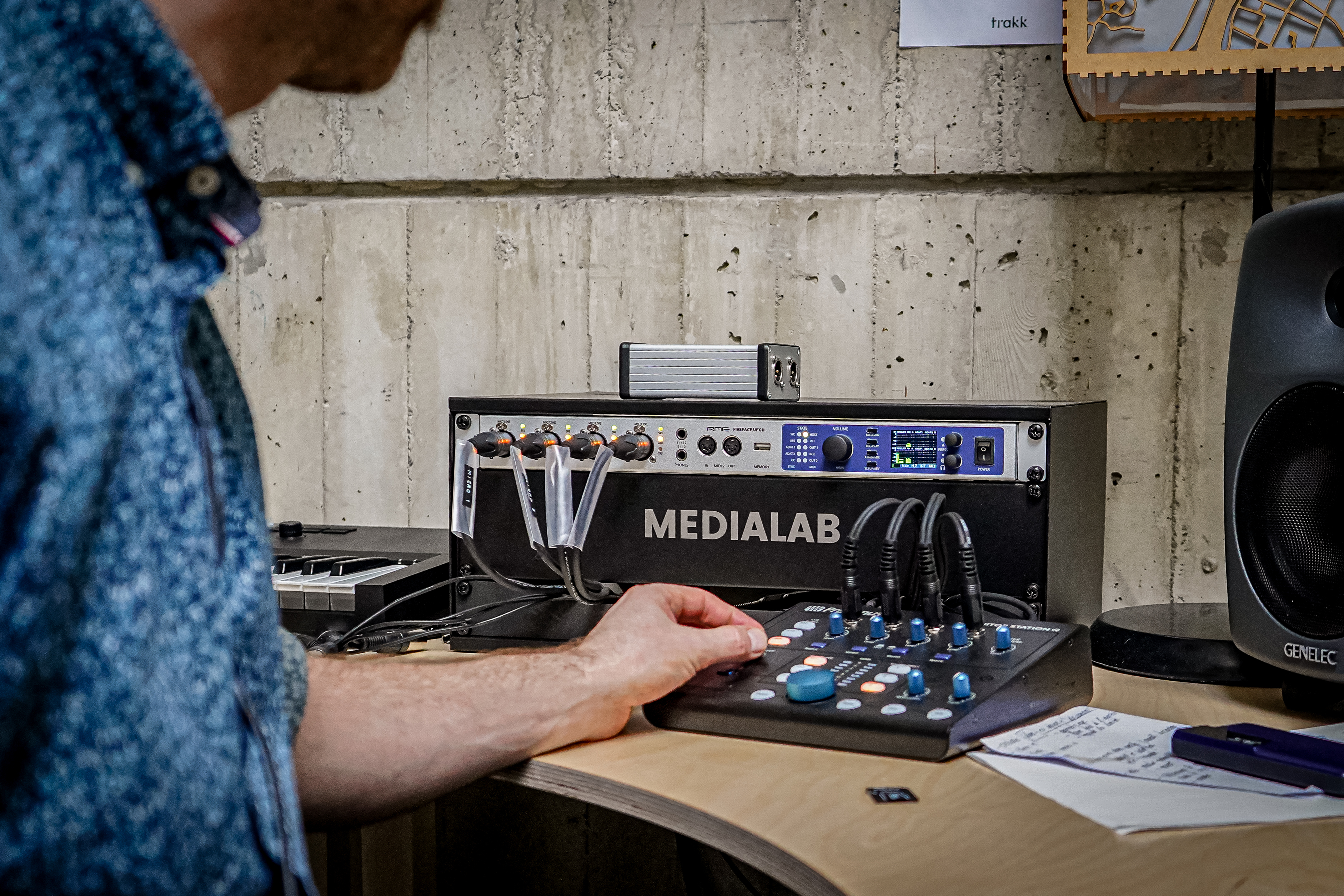
In reality, it is all carefully conceived to break established routines, inspire new ideas and, in offering a diversity of different environments, to ensure that each zone is prearranged for a certain mission. For example, making available play areas including darts, arcade games or consoles is not done solely to be ‘in’ (signalling you are in your thirties without actually saying so). First of all, it is to create a relaxed atmosphere which reduces stress and increases productivity, but it, furthermore, serves to demarcate your desk as a work space and not as one for distraction.
One thing you will certainly know of and which you regularly hear about are the co-working spaces.– Don’t worry, it will all be explained, that’s the aim of this case study.
‘Co-working’ is the portmanteau word composed of ‘cooperative’ and ‘working’: in brief, it is work carried out through cooperation. You have to imagine tables, desks where no-one has a fixed space. Each person takes their spot wherever they feel like it, depending on their energy, but also on the energy of the other people present. Once again, large open spaces, flexible furnishings, high-performance Wi-Fi, and a specific visual and structural organisation invite the co-workers to work individually but to leave their zones to meet up and develop a form of collaboration.
For that matter, for people who are accustomed to more conventional offices, the creative hubs more resemble playgrounds than working environments. The spaces made available encourage the informal conversations essential to creativity. – So you have also heard that in creative hubs there are often Fab Labs. Well done!

A Fab Lab (abbreviation of Fabrication Laboratory) is a workshop equipped with numerical control machines, prototyping tools, crazy, hard to find software and other ultra-modern technologies. Often found within them are 3D printers, laser and vinyl cutters, 3D scanners as well, CNC milling machines and a whole mass of other electronic equipment for the design and manufacturing of electronic circuits.
As a result, the people who enter the doors of a Fab Lab can design, develop, gain access to assistance, prototype and manufacture projects as innovative as they are hitherto unseen: what sticks in the mind from the Liege based plug-R platform is the GPS device for connected smart glasses, whilst Louvain-la-Neuve provided aid in the development of Focus, the anti-stress pebble for children who need help in processing their emotions, and we might mention Canari, developed at TRAKK, a lamp which represents pollution visually.
Zoom-in on the content
A little like the form, which hinges on a double interplay between flexibility and structure, creative hubs are imagined and function on a contrast between components which may appear contrary, but which should instead be considered complementary.
Community >< Individual
Let us take the example of the Fab Labs we have just mentioned. The M.I.T (Massachusetts Institute of Technology), a globally renowned university, has conceived a charter for its Fab Lab. Since then, Fab Labs which are labelled as such must follow its guidelines. In it are found aspects of internal management (such as being responsible, tidy, respecting the equipment, etc.), but in it first and foremost can be seen access, education and community intentions:
Access
You can use the Fab Lab to manufacture almost anything (as long as it doesn’t harm anyone); you have to learn how to manufacture it yourself, and you have to share use of the Lab with other users and utilisers.
Education
Training in the Fab Lab leans on peer-based projects and learning; you have to take part in knowledge capitalisation and instructing other users.
Business
Commercial activities may be incubated in the Fab Labs, but they must not pose an obstacle to open access. They must be developed externally to the Lab rather than within it, and in their turn benefit the inventors, the Labs and the networks which have contributed to their success.
It is precisely within this perspective that creative hubs exist: the notion of community is essential in the same way as individuals in their uniqueness are. This vision engenders:
- Firstly, synergies between the individuals who pass through them. With people linking up with one another, they can discuss, exchange ideas and combine their skills to either develop joint projects, or give rise to new initiatives for their individual projects.
- Secondly, inspiration: within creative hubs, as we said, the spaces are developed from the perspective of structure (I do this in that place). The shared spaces are thus interaction areas which allow people from a very vast common sector (CCI, cultural and creative industries) to mutually inspire one another and create a motivating and encouraging environment full of solutions.
- Thirdly, a professional network: at the coffee machine, discussions and networking take place. It is in that case guaranteed that when the midday poke bowl or the beer at 5 p.m. are ordered, the people aren’t swapping business cards but are talking shop, and it is exactly that which enables people to build contacts, fill their address books and even meet the professional needs of other individuals … and thus to grasp opportunities.
- Fourthly, a sense of belonging and therefore of mutual assistance. A community also means feeling included in a physical site and in a philosophy (which we discuss at length in this case study).
- Finally, the sharing of knowledge, skills and expertise. Whilst each person is working in the CCI, they individually contribute with their specific knowledge and skills, which become complementary to the others.
Empowerment >< Back-up
It is often the case in these creative sites that several types of individuals make their way through the doors: the managers (those who are in-house members, who are hired by the hub to assist the project owners, the people who provide aid in the use of the CNC tool or the microphones in a podcast studio), the residents (certain hubs suggest that creative organisations establish more permanent offices) and the co-workers who come less regularly, who all the same know the spaces but who take advantage of either the … rising drum roll, part 2 … co-working space, or the meeting areas, for example (then there are those who turn up to grab a chat at lunchtime, or over the first post-work drink). Amongst the other occasional visitors are those who come for larger and less specific events such as training or meeting opportunities.
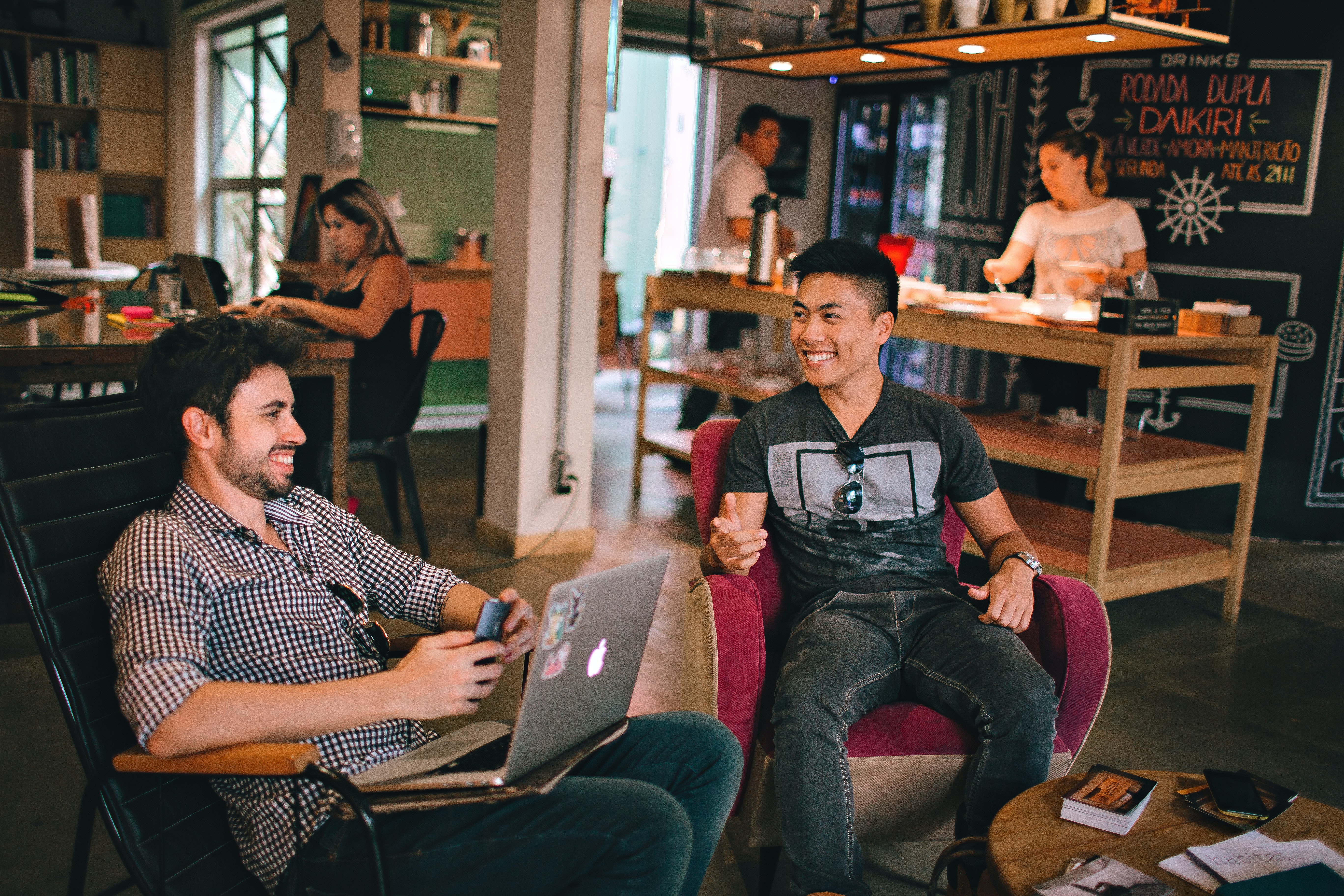
This overview of the community, active at certain times, enables a synergy to be formed amongst all the members of this group. Each with their own energy, their soft and hard skills, as we would say nowadays. It is the encounter of these experiences which will facilitate collaboration and allow those involved to gain skills as a means of becoming autonomous in their own practice.
We often have this idea of a trainer who will teach knowledge to a trainee. But this is a very vertical view of learning. In a creative hub (and it should be the case in other domains), whilst there may be theory, it is first and foremost in practice that the projects take concrete form. The individuals who choose to be guided by others are aided from the perspective of autonomy and the adaptability of their new skills in their own area of expertise.
It is in this way that hubs generally offer a whole raft of events, some more stimulating than others, be they training occasions, exchanging good practices, discovering new tools or moments of actual creation. And you know it is working when it is not always the same faces you see amongst those taking part.
And so, besides this opportunity to network and develop skills through the guidance of qualified people, creative hubs valorise empowerment by means of valorising personal expression. Creation, no matter what type it is, enables individuals to have confidence, to be encouraged and to develop their creative identity.
Could we thus say that TRAKK is a creative hub?
The answer is yes. In the same way as the 8 other creative hubs recognised in Wallonia (funded by the Feder). The map below pinpoints each one of them.

Incidentally, here are the links so that you can go and discover them yourselves: the Luxembourg Green Hub – the Liege Plug R – the Seraing Creative Hub – the Verviers Creative Hub – the Namur Trakk (that’s us!) – the Louvain la Neuve Open Hub – the Charleroi creative hub Métropole – the Mons Le Click and the Wap’s Hub in Walloon Picardy.
These hubs offer pooled services: work, inspire, create and share. Beyond the verbs, one senses that at work within them all are missions and values carried by the form and the content presented earlier –We know … the Grand Poste in Liege, for example, it resembles EXACTLY everything that has just been said, and yet it is not on the list…
You are keeping up very well! It is true that there are also other creative spaces, which often for that matter work in the same domains. The Grand Poste in Liege defines itself as being a creative district, the A6K in Charleroi as an industrial and digital hub and BeCentral in Brussels as a digital campus.
These sites are certainly much alike, but with an important distinction: the guidance offered to start-ups to develop and increase their full potential. We would incidentally refer you to the case study ‘What’s Hub,’ which relates the greatest success stories of the Wallonia creative hubs.
But … we all the same have an existential question…
Does this thing actually work?
Frankly, we are not going to lie to you. It is not easy to lay your hands on any figures. In any case, we haven’t found any. But over the course of the writing of this article, it became very clear that the communication around these creative sites is far from optimal. First of all, because not everybody necessarily has access to them, in terms of costs (because, of course, there is only a small budget to set aside), time (if you want to develop your creative project, you also need to have the space to do so) and sensibility (not everyone necessarily has the personality to fit in with these types of creative space, without borders, in a community).

Next, because our Walloon culture is not very developed in terms of the culture of sharing. Sometimes, we prefer to reinvent the wheel 50 times (a question of ego, perhaps), rather than work with others and be inspired by (without reproducing) what exists already. The source of that is surely a stereotyped collective image which struggles to consider the cultural and creative industries as being an innovative and high-performance professional domain for the future. As if art and society were antinomic, as if culture had no value other than to entertain. And in this context, it is thus difficult to encourage creative entrepreneurship
In the end, that is where the value of creative hubs lies. It is precisely the power to make emerge dynamic creative ecosystems in which talents can be discovered, recognised, recompensed and emancipated. It is the combination of the form (which resembles others) and the content (which unifies all the missions) which enables these sites to stand out from others and which deserve to have people pushing through their doors.
All that is needed is the daring to do so … and to have the right key, all the same.
Source: https://artsetmetiers.fr/fr/quest-ce-quun-fablab
A story, projects or an idea to share?
Suggest your content on kingkong.
